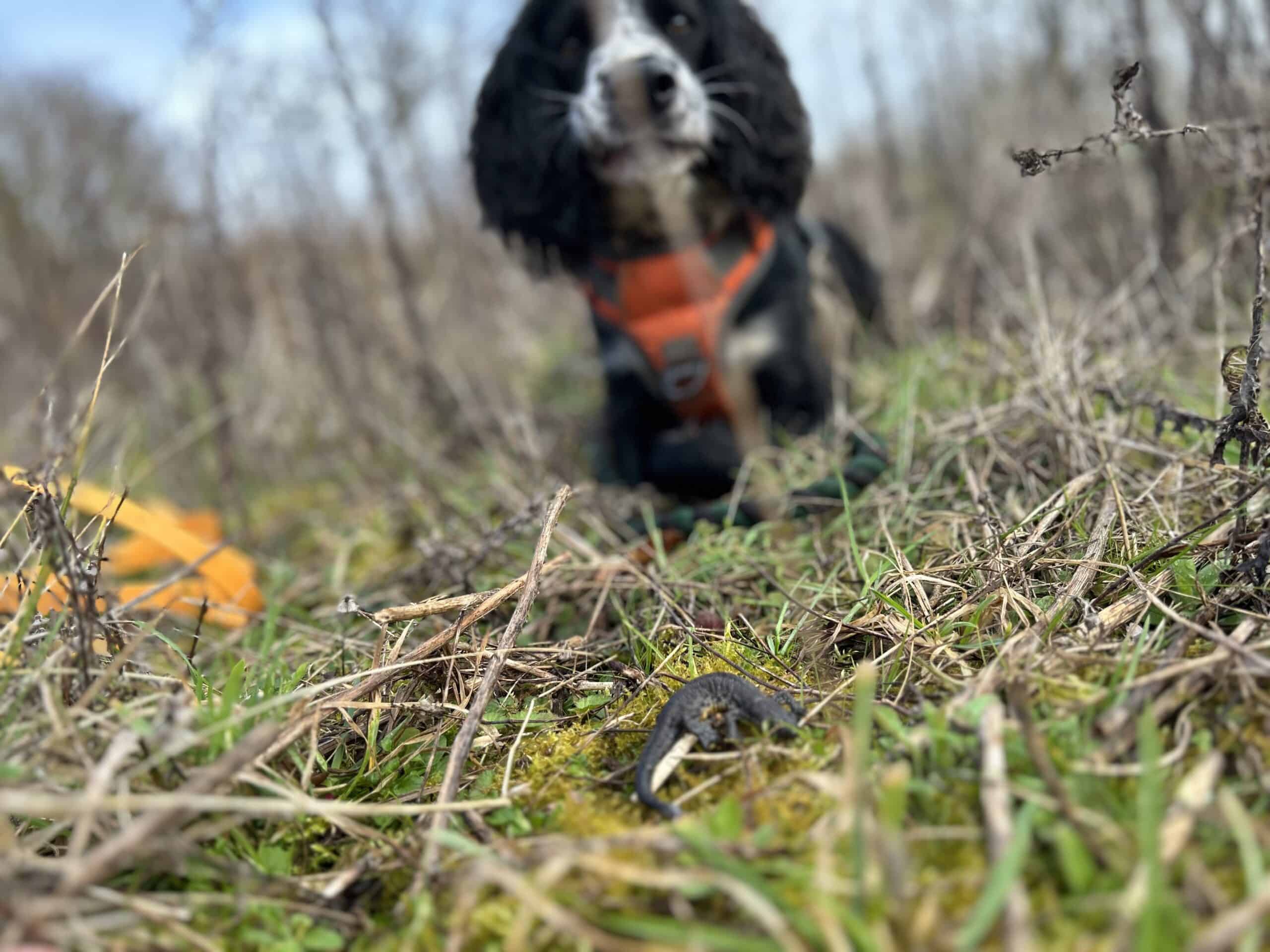Share this article
Wildlife Featured in this article
- great crested newt
Detection dogs seek out endangered crested newts
Dogs are best at detecting the amphibians when there’s venting present and in clay soil
Finding endangered great crested newts isn’t easy, since they spend part of their lives refuging underground. Detecting them would require senses other than vision. That’s where scent detection dogs come in.
Listed as a species of conservation concern under British and European law, great crested newts (Triturus cristatus) are found in the United Kingdom and other parts of Europe. The species, which is declining due to habitat fragmentation, climate change and diseases, emerge into ponds to breed from roughly March to June. Then, they go terrestrial for two-thirds of their lives, using refugia such as rocky crevices, log piles, grassland and small mammal burrows.
“The current tools to locate great crested newts, such as pitfall traps, largely rely on chance encounters and are heavily constrained by weather, season, vegetation density and accessibility,” said Nicola Jayne Glover, who is a PhD student at the University of Salford in the U.K. “As humans we also rely on visual cues when searching for newts which has its constraints, particularly when the newts are obscured. I thought there has got to be a better way.”

Finding the endangered species is especially important, Glover said, because the species legally needs to be moved out of the way when there are temporary or permanent impacts on the land. Glover, who is also a senior ecologist at a water company, said part of her work includes safely, quickly and efficiently moving the newts out of the way of pipeline projects until they projects are finished.
In 2016, Glover saw a magazine on the floor of her office with a dog trainer named Louise Wilson with her bat carcass detection dog Twister on the cover, and a lightbulb went off. She thought it would be great if dogs could be used to detect hard-to-locate species, such as great crested newts. Luckily for Glover, Wilson was the perfect person for the job—she was the first to ever train great crested newt detection dogs back in 2014.
Glover reached out to Wilson to see if she could help her out. With her assistance and a full year of training, she tested her dog Freya, then a 2-year-old English springer spaniel, to see if the dog could detect the newts. “It was clear from the initial training sessions that Freya was born to do the job,” Glover said.

Scent detection dogs have been used in the United States for over 20 years or so, but are fairly novel in the U.K. Research is also lacking globally on amphibian detection dog capabilities. To prove their talents, Glover conducted a proof-of-concept study to see if dogs are capable of detecting great crested newts not only on the surface but at distance, depth and through soil. She published her findings in PLOS ONE.
As part of the study Glover tested Freya’s ability to detect great crested newts at a depth of 20 centimeters in sandy and clay soils, some vented to mimic mammal burrows and some not.
She and her colleagues found that Freya was quicker to detect the newt scent on the vented treatments. While Glover thought she would be better at detecting the newts in sandy soil, which was true in human carcass detection research, Freya was actually better at detecting the newts in clay soil. Glover thinks it may be because the newts’ scent clings to water molecules in clay soil. Researchers can use these specific findings to their advantage when searching for newts, she said.
Overall, Freya had 88% accuracy. Subsequently, Glover tested another dog, Newky, on the same study design in 2022, with a 92% accuracy. Both detection dogs showed the same patterns when it came to venting and clay soil.
Glover stressed that the dogs aren’t the only hard workers when finding endangered crested newts. “It’s definitely about teamwork,” she said.
Header Image: Scent detection dog Freya sniffs out a great crested newt. Credit: Nicola Jayne Glover








